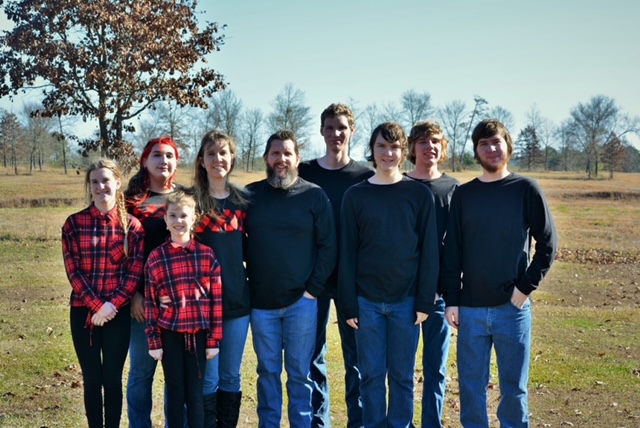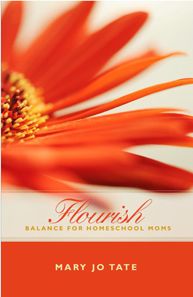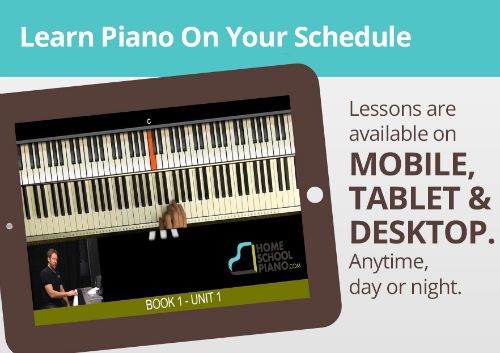Back in 2012, we had an opportunity to review Lightning Literature
British Literature Mid-Late 19th Century from
Hewitt Homeschooling. We really, really liked Lightning Literature and continued to use it. As this school year was drawing to a close, I was trying to find a literature program that I could use that would work for my younger children. I cannot tell you how excited I was when I found out we had an opportunity to review the new Lightning Literature and Composition 1st Grade program. We received:
Lightning Literature and Composition Grade 1 Student Workbook and
Lightning Literature and Composition Grade 1 Teacher's Guide.
Lightning Literature's new elementary series uses award winning picture books to instill a love of great literature in your children, and teach them the basics of composition, grammar and mechanics. They began with the 1st Grade program with plans to add one grade per year until they reach grade 6. 2nd grade will be available this year and 3rd grade will be field testing this fall.
The 1st grade level of Lightning Literature and Composition can be used with children in the 1st or 2nd grades. There are two components that need to be purchased.
The Teacher's Guide ($29.95) is a paperback 318 page book that contains lesson plans, suggested schedule, comprehension questions, answers to the student workbook exercises, teaching tips, an Aesop's Fable for each lesson and ideas for extending the lessons.
Sample chapter
The Student Workbook ($49.95) is a paperback, 348 page book that contains the student's grammar and mechanic pages, reading journal pages, dictionary pages, and alphabet and sentence pages. This book is consumable and you will need one for each child who is using it.
Sample Chapter
Lightning Literature and Composition uses a different picture book each week for 36 weeks. You do not need to buy the books, many will be available at your local library and some you may already own. Titles include (in the order they are used):
Harold and the Purple Crayon by Crockett Johnson
Madeline by Ludwig Bemelmans
The Snowy Day by Ezra Jack Keats
Caps for Sale by Esphyr Slobodkina
Chickens Aren’t the Only Ones by Ruth Heller
Umbrella by Taro Yashima
The Important Book by Margaret Wise Brown
Joseph Had a Little Overcoat by Simms Taback
The Napping House by Audrey & Don Wood
The Tale of Peter Rabbit by Beatrix Potter
The Hello, Goodbye Window by Norton Juster
Grandfather’s Journey by Allen Say
Doctor De Soto by William Steig
Frog and Toad Are Friends by Arnold Lobel
How the Grinch Stole Christmas! by Dr. Seuss
The Story of Ferdinand by Munro Leaf
Alexander and the Terrible, Horrible, No Good, Very Bad Day by Judith Viorst
Mother Goose Rhymes by Mother Goose
Mabela the Clever by Margaret Read MacDonald
Make Way for Ducklings by Robert McCloskey
Stellaluna by Janell Cannon
Chester’s Way by Kevin Henkes
The Story About Ping by Marjorie Flack
Mouse Soup by Arnold Lobel
Bill and Pete to the Rescue by Tomie dePaola
Best Friends for Frances by Russell Hoban
Always Room for One More by Sorche Nic Leodhas
Tikki Tikki Tembo by Arlene Mosel
Millions of Cats by Wanda Gág
Curious George Flies a Kite by Margret Reyv
Babar the King by Jean de Brunhoff
This Is London by M. Sasek
Mike Mulligan and His Steam Shovel by Virginia Lee Burton
How Droofus the Dragon Lost His Head by Bill Peet
The Big Orange Splot by Daniel Manus Pinkwater
Wabi Sabi by Mark Reibstein
An Aesop's Fable is also used in each lesson. Lightning Lit recommends a Dover Edition, but there are many other editions available you can use or even find them free online. The fable is not related to the story that week so you can even use an alternate fable if you choose.
Let's take a look at what a typical week looks like.
Monday-Read the book and ask your child both literal and inferential comprehension questions. Students complete a grammar/mechanic worksheet and brainstorm for their composition.
Tuesday- Have the child narrate back to you as much of the story as they can. Read the book again if you choose. Students complete the grammar/mechanics assignment, do further brainstorming or ordering of ideas for their composition, and complete the reading journal page.
Wednesday-Read the book again. Answer comprehension questions aloud. Today students complete either an alphabet or sentence worksheet and can enter words in their dictionary pages. The rough draft of the composition is written today.
Thursday-On Thursday you will read an Aesop's Fable with your child. Students also complete a grammar/mechanics page and write the final draft of their composition.
Friday-Fridays are free days. You can complete assignments you didn't get to during the week, take the day off, or do some of the extending the lesson activities if you choose.
I used Lightning Lit and Comp Grade 1 mostly with my 7 year old. But, as you can see from the above picture my 3,5,and 9 year olds also listened in to the stories every day, answered some of the comprehension questions, and even worked on and illustrated some compositions. I read the story aloud every day, sometimes several times. Christian (7) did the grammar/mechanics exercises in the workbook. Anything that involves a lot of writing like the Alphabet worksheets, reading journal pages, and the compositions, he dictated to me and I wrote them out for him. I had several of the books on my shelf already, bought a few more, and borrowed some from the library. The Aesop's Fables I have been reading from a free online source.
 |
| Christian brainstorming for his instructional paper |
We have really, really enjoyed using Lightning Literature and Composition Grade 1!!! We love the stories. As I mentioned above I read them at least every day, sometimes more than once because my little girls begged, "Please one more time!" Reading is very important to us in our homeschool. I am always looking for great books to read and I just love that Hewitt Homeschooling is designing these programs for the younger grades too! I like the corresponding grammar/mechanics exercises. They are a gentle and age appropriate way to teach the concepts and are visually appealing. I love the comprehension questions and the narration exercises. I love the compositions. It is a great way to get the younger children writing in a way that is fun! Even if your children are not able to write very much on their own, you can easily allow them to dictate the story to you so they can communicate what they want to say without becoming frustrated. Christian loves to dictate and illustrate his compositions. When we did Harold and the Purple Crayon, he dictated and illustrated a whole book and even added a second one to his series a week later!
 |
| Anthony's paper and illustration of a time he was sick |
From a teaching standpoint, the program is very easy to use. I read through the first few pages of the Teacher's Guide when I got the book so I had an idea of how the scheduling worked and what would be done each day. Besides making sure I have the necessary book, I quickly glanced through the lesson's week at a glance page the Friday before to see if I want to pick up any of the optional reading material from the library. There isn't any other advanced preparation needed. I love the flexibility of the program. If for instance you think the dictionary pages and alphabet pages are too much, you do not have to do those. If your child is able to do all the writing on their own, great! If not, that's great too! How much time spent per day is hard to estimate because as I mentioned I read the book every day sometimes more than once, and also if a child is doing the writing on their own it will take longer than if you are writing it for them. But we have spent less than 30 minutes on it every day. I love that it runs on a 4 day per week schedule! We take Fridays off for errands and activities so that was just perfect for us. Even if you usually work 5 days a week but it gives you a flex day if you run behind during the week and miss a day and need to catch up without trying to cram two days in one, or gives you an opportunity to do some of the extending the lesson activities if you choose.

If there was one thing that I wish was different it would be that I would love the books to be spiral bound so they can lay flat and leave my hands free and make it easier to write in.
We are planning on continuing with Lightning Literature and Composition Grade 1 this year and I am looking forward to using more of their elementary series in the future!
Members of The Crew reviewed a wide variety of products from Hewitt Homeschooling. To see what my Crew Mates had to say, click on the banner below.



.JPG)



.JPG)
.JPG)













































